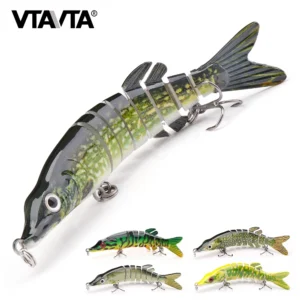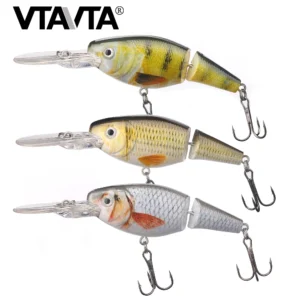Striped Bass Lures That Work in Any Condition (Saltwater & Freshwater!)
Reeling in striped bass shouldn’t feel like gambling. Whether you’re battling ocean currents or working freshwater reservoirs, having the right lures in your tackle box makes all the difference between an epic haul and going home empty-handed. After two decades of chasing stripers from Maine to Florida, I’ve narrowed down the must-have lures that produce fish when nothing else will—regardless of conditions.

Why Lure Selection Matters for Striped Bass
Striped bass are opportunistic predators but frustratingly selective. One day they’ll smash topwater plugs with reckless abandon; the next, they’ll ignore everything except a slow-dragged soft plastic. Understanding these striped bass feeding patterns separates consistent anglers from frustrated ones.
Water temperature, clarity, baitfish presence, and current strength all influence what lure will trigger strikes. The best striper lures share three key traits:
Versatility – Performs in multiple depths and retrieves
Realism – Matches local forage fish appearance/vibration
Durability – Withstands repeated strikes from hard-fighting bass
Top 7 Striped Bass Lures for All Conditions
1. Bucktail Jigs (1/2 oz – 3 oz)
When to use: Murky water, strong currents, vertical jigging
Best colors: White, chartreuse, black/purple
Retrieve: Slow lift-drop or steady swim
No striper angler’s arsenal is complete without bucktail jigs. Their pulsating hair skirts create vibration that draws bass from distance. I always keep 2-ounce models rigged with 6″ plastic trailers for deep holes and bridge pilings. Pro tip: Add a strip of pork rind when fishing below 50°F for extra action.
2. Soft Plastic Swimbait (4″-9″)
When to use: Clear water, schooling fish, night fishing
Best brands: Storm WildEye, Keitech Swing Impact
Rigging: Weighted swimbait hook or jighead
Nothing mimics baitfish movements better than a quality swimbait. During the fall run, I’ve outfished live-liners using 7″ pearl belly baits on 1.5-ounce jigheads. The key is matching the size to local forage—smaller (4-5″) for river herring, larger (7-9″) where menhaden dominate.
3. Topwater Plugs (5″-7″)
When to use: Dawn/dusk, surface-feeding frenzies
Must-haves: Heddon Super Spook, Cotton Cordell Pencil Popper
Technique: “Walk-the-dog” retrieve
When stripers blitz on top, nothing beats the heart-stopping explosion of a topwater strike. My most memorable catches came on bone-colored plugs worked erratically over shallow flats. Keep the rod tip low and pause between twitches—that’s when 90% of strikes occur.
4. Metal Lip Swimbaits (6″-9″)
When to use: Rough surf, deep structure, night fishing
Legendary lures: Gibbs Danny, Super Strike Little Neck
Retrieve: Slow, steady with occasional pauses
These wooden swimmers have fooled stripers since the 1940s for good reason—their weighted lips produce an irresistible wobble at any speed. I carry at least one black back/white belly model for fishing after dark when big bass cruise the shallows.
5. Tube-and-Worm Rig
When to use: Clear water, pressured fish, summer months
Setup: 5-7″ amber or purple tube on 3/0 hook
Presentation: Drift or slow troll near bottom
New England’s secret striper killer works everywhere. The subtle action of a drifting tube triggers neutral bass when flashier lures fail. I add a small spinner blade 18″ above the tube in stained water for extra attraction.
6. Diamond Jigs (1 oz – 4 oz)
When to use: Deep water, fast currents, winter fishing
Colors: Chrome, gold, green prism
Method: Vertical jigging or cast-and-sink
When stripers hold deep in 40+ feet, diamond jigs get down fast and flutter enticingly on the drop. My biggest winter bass (42″) fell for a 3-ounce chrome jig tipped with squid near a deepwater discharge.
7. Soft Plastic Jerkbaits (5″-7″)
When to use: Cold fronts, finicky fish, slack tide
Top picks: Zoom Super Fluke, Bass Assassin Sea Shad
Action: Sharp twitches with long pauses
Sluggish bass often ignore fast-moving lures but can’t resist a suspending jerkbait. Rig them weightless on 5/0 hooks for surface-slashing action or add a nail weight for deeper presentations.
Condition-Specific Lure Strategies
Murky Water Tactics
High-visibility colors: Chartreuse, pink, orange
Noisy lures: Rattling crankbaits, spinnerbaits
Vibration-heavy: Colorado blade spinnerbaits, chatterbaits
I keep a red/white spinnerbait rigged whenever runoff clouds the water—the flash/vibration combo helps bass locate the lure.
Clear Water Approaches
Natural colors: Silver, baitfish patterns
Subtle action: Unweighted soft plastics
Finesse presentations: Drop-shot rigs, small jerkbaits
In crystal-clear reservoirs, I downsize to 4″ baits on 1/4-ounce heads and make long casts.
Fast Current Solutions
Heavy jigs: 2-4 oz to maintain bottom contact
Trolling rigs: Mojos, umbrella rigs
Sinker rigs: Fishfinder with live eels
When the tide rips through inlets, I switch to 3-ounce bucktails and work eddies where bass wait to ambush prey.
Seasonal Striped Bass Lure Guide
Spring (Pre-Spawn)
Top priority: Warming shallow flats
Best lures: Small swimbaits, jerkbaits
Key technique: Slow rolling near bottom
Summer (Post-Spawn)
Focus areas: Deep structure, night fishing
Top producers: Jigs, live eels, deep divers
Retrieve: Faster to trigger reaction strikes
Fall (Migration)
Hotspots: Baitfish concentrations
Lure choices: Topwater, metal lips
Strategy: Match the hatch aggressively
Winter (Deep Holdovers)
Location: Thermal refuges
Effective lures: Jigging spoons, blade baits
Presentation: Vertical jigging with long pauses
Pro Tips for More Strikes
Vary your retrieve speed until you find what triggers strikes—sometimes painfully slow works best
Change directions frequently during retrieves to mimic fleeing baitfish
Upgrade your hooks on factory lures—stout 4X trebles prevent straightening
Add scent on tough days—pro-cure gel on soft plastics makes a difference
Watch bird activity—diving terns often reveal feeding bass locations
Final Cast
The best striped bass lure is the one you have confidence in, but carrying these proven fish-catchers ensures you’re ready for whatever conditions Mother Nature throws your way. Next time you hit the water, experiment with different retrieves and colors until you crack the code. When you do, hold on tight—stripers hit like freight trains!
Got a favorite striper lure I didn’t mention? Drop a comment below with your go-to bass slayer! For more hardcore fishing tips, check out our guide to striped bass rigs for live bait or the ultimate tide charts for striped bass fishing. Tight lines!




